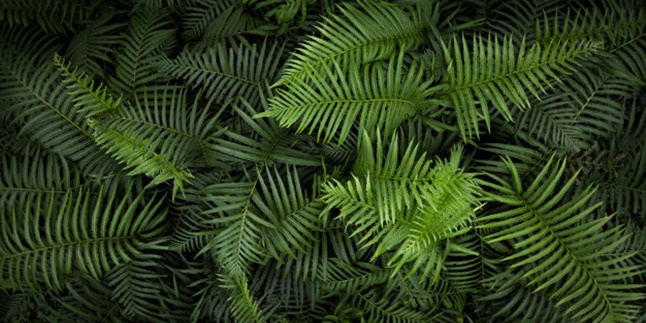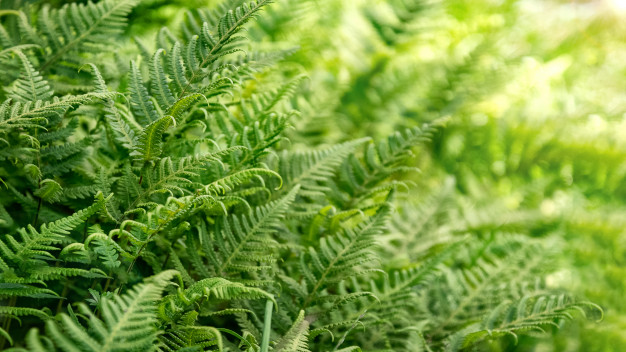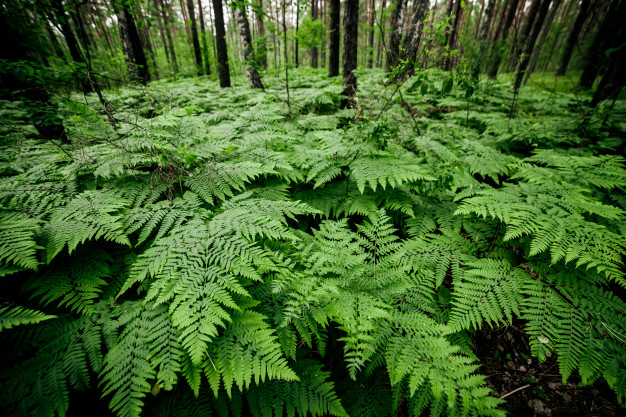Prayer for Heavy Rain and Strong Winds to Avoid Dangerous Situations, Complete with Its Meaning
Here are some prayers to recite during heavy rain and strong winds. What are the prayers and their meanings? Let's check them out KLovers.

Kapanlagi.com - Ferns are often used as decorations for gardens or even indoor spaces. Ferns are actually a type of plant that has true vascular systems (Tracheophyta). It is not difficult to identify a plant belonging to the fern family. This is because there are several unique characteristics of ferns that differentiate them from other types of plants.
Ferns are also often referred to as 'pakis-pakisan' in Indonesian. Meanwhile, in English, ferns are known as 'fern'. Ferns can thrive in humid tropical environments, such as in Indonesia. It is not surprising that besides being used as ornamental plants, ferns are also consumed as daily food in some regions.
Ferns are a unique type of plant. This uniqueness is also evident in the characteristics and structure of ferns. Compiled from various sources, here is a review of the characteristics and structure of ferns.

(credit: freepik)
Ferns are indeed unique and different from other types of plants. One of the uniqueness of ferns is their asexual reproduction through spores. In the biological classification system, ferns are classified into the plant kingdom division. This is because ferns have structures such as roots, stems, true leaves, and transport vessels.
In general, the characteristics of ferns are as follows:
1. Generally live and grow in wet tropical areas.
2. Ferns have leaves that grow from rolled shoots and have fine hairs.
3. Do not produce flowers and fruits.
4. Reproduce through spores.
5. Can reproduce vegetatively through the formation of gemmae and generative reproduction through the fusion of male and female gametes.
6. Have a transport vessel system in the roots, stems, and leaves. The transport vessels in ferns are xylem vessels. These vessels function to transport water and mineral salts from the roots to the leaves for the process of photosynthesis.
7. In some types of ferns, they can be in the form of unbranched trees, like shrubs. However, they can also be epiphytic plants, climbing plants, floating in water, hydrophytes, or rhizomes that crawl on the ground.

(credit: freepik)
Like other plants, ferns also have a body structure. It has been mentioned before that the body structure of fern plants consists of roots, stems, and leaves. However, it should be noted that the conditions of the roots, stems, and leaves of fern plants are quite unique and different from other types of plants. To understand more, here is a review of the roots, stems, and leaves of fern plants.
1. Root Part
One characteristic of fern plants is having fibrous roots. The uniqueness found in the roots of fern plants is the tip that is covered with a calyptra.
2. Stem
The stem of fern plants only appears above the surface and is only about 0.5m tall. In fact, in some types of fern plants, the stem is not visible at all. Instead, it appears in the form of rhizomes underground.
However, there are also fern plants that can grow large and reach up to 5 meters. These fern plants are called tree ferns or pole ferns. Another unique type, there are also two fern plants that have branches. These two fern plants are called Cyathea and Alsophilla.
3. Leaf
The third part of the structure is the leaf. The leaf part can show the characteristics of fern plants. Even in some types of ferns, the stem is not visible. Instead, it appears underground in the form of rhizomes.
However, there are ferns that can grow large, even up to 5 meters. These ferns are called tree ferns or pole ferns. Another unique type is the presence of two ferns with branches. These ferns are called Cyathea and Alsophilla.
3. Leaves
The third structural part is the leaves. The leaves can show the characteristics of ferns. This is because ferns have unique leaf shapes. Especially when they are young, the leaves appear rolled up and circular. Fern leaves have several layers, namely the epidermis, leaf tissue, and leaf veins. In addition, fern leaves are divided into two types, Macrophyll and Microphyll.
Macrophyll is the term for large leaves with leaf veins, petioles, and branches. Meanwhile, pinna is the term for the entire leaf in one petiole of a fern. These leaves already show cell differentiation.
Microphyll is the term for small, hair-like leaves that are not scaly, do not have leaf veins, and do not have petioles. These leaves have not yet shown cell differentiation.
Based on their function, fern leaves are further divided into two types, sporophyll and trophophyll. Sporophyll is a leaf that can produce spores. This leaf is also called troposporophyll because it can photosynthesize. Meanwhile, tropophyll is a leaf that functions for photosynthesis. This leaf does not have sorus, but it contains many chlorophyll.

(credit: freepik)
There are various characteristics of fern plants, because these plants indeed have four types of classifications. The four types of classifications are Equisetinae (Horsetail Fern), Filicinae (True Fern), Psilophytinae (Ancient Fern), Lycopodiinae (Clubmoss). To better understand the differences between them, read the following explanation.
1. Equisetinae (Horsetail Fern)
Horsetail fern plants have a distinctive characteristic of a single leaf with small size arranged in a spiral pattern. In addition, the stem is green and segmented. The sporangium is located in the strobilus.
2. Filicinae (True Fern)
True fern plants have characteristics of large-sized leaves, sporangium found on sporophyll, and young leaves that are curled. These types of ferns are often referred to as ferns.
3.Psilophytinae (Ancient Ferns)
Ancient ferns are currently endangered. They are only found in the form of fossils. Ancient ferns have small leaves, some even without leaves. The remaining species of these ferns are Psilotum.
4.Lycopodiinae (Wire Ferns)
Characteristics of wire ferns include small leaves with a spiral pattern. As the name suggests, the stem of these ferns resembles wire. Generally, these types of ferns live on land with sporangia located in the leaf axils forming a strobilus.
Those are some of the characteristics of ferns, as well as their body structure and classification. Hopefully, this information is useful and can increase knowledge!
(kpl/psp)
Cobain For You Page (FYP) Yang kamu suka ada di sini,
lihat isinya
Here are some prayers to recite during heavy rain and strong winds. What are the prayers and their meanings? Let's check them out KLovers.
Conspiracy is the suspicion of collusion in carrying out a grand plan. Here are some reviews about conspiracy.
What are the differences between Hajj and Umrah? Let's find out the differences between the two.
Here are some benefits of Bali oranges for your body's health. What are these benefits? Let's check it out KLovers.
You need to know that there are several identified types of anemia. These types of anemia are also distinguished based on their respective symptoms. It is important for you to know this in order to determine the appropriate treatment and prevention measures. Let's directly recognize each type of anemia.
Global warming is often defined as the condition when the temperature on the Earth's surface increases globally or universally. Here are some causes of global warming.
Here are some benefits of green cincau that are good for your health. What are these benefits? Let's check it out, KLovers.
There are various types of eye diseases that can be quite frightening for some people. Therefore, you should also know the types of eye diseases that are currently occurring in order to prevent them. Check out the following discussion.
A synopsis is an important part of promoting a work. To better understand what a synopsis is, read the following review about a synopsis.
Phobia itself is a mental disorder where a person will experience excessive or continuous fear of a particular object. You need to know that there are several types of phobias that are most common. What are they?
Management is an important science for anyone to learn. Now, to better understand what management is, read the following reviews.
Life in pesantren sometimes gives various lessons and meanings that are very inspiring. Because besides gaining knowledge, the pesantren world also teaches about the meaning of independent life, full of tolerance and cooperation.